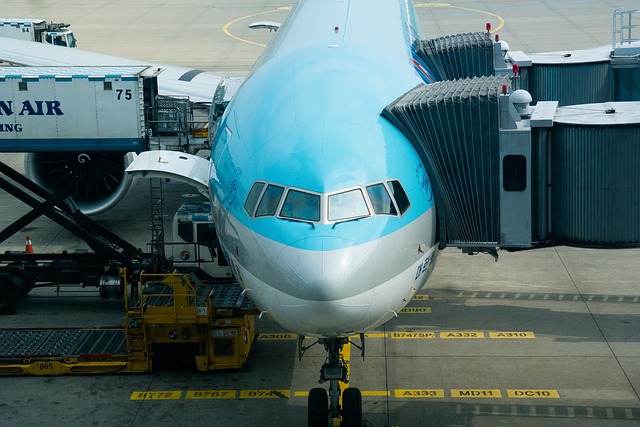Airports, FOD Operations, Uncategorized
Foreign Object Debris Control at Airline Ramps
Foreign Object Debris (FOD) is a critical concern on airline ramps and aprons, posing significant risks to both safety and operational efficiency.
In airline environments, FOD can include a wide range of materials, such as pavement fragments, loose baggage tags and handles, food wrappers, beverage containers, misplaced tools and hardware, dropped personal items such as pens and lanyards, and debris from the natural environment.
A Foreign Object Damage (also called FOD) incident can cause flight delays and/or down time from cut or punctured tires, nicked turbine blades, compromised avionics, or flying debris impacting a fuselage, ground vehicle, cargo or nearby personnel.
Station and maintenance managers, along with their ramp and apron agents under their supervision, play crucial roles in controlling FOD. Here are some effective measures they can employ.
Suggested Resources
Check out our articles on how to prevent FOD at your airport or how to set up a FOD Program at your airline for more great ideas.
Training and Awareness

Effective FOD training programs should cover a wide range of topics, including the identification of common debris items, understanding risks and consequences, and learning proper reporting and removal procedures.
Training sessions can include practical demonstrations, workshops, and interactive activities to engage participants and reinforce key concepts.
Outside of training, raising overall awareness about FOD is crucial to fostering a culture of responsibility. Awareness campaigns can include posters and signs displayed throughout the work area.
FOD Walks are an especially effective training and awareness method, where personnel line up in a long row and walk the flight area together, collecting debris as they go. This hands-on approach helps staff develop a keen eye for spotting FOD and reinforces the importance of continuous vigilance.
Encouraging feedback from staff on the effectiveness of training programs helps identify areas for improvement and ensures that training remains relevant and impactful.
Clean As You Go
The “Clean-As-You-Go” practice is a proactive approach to FOD control that emphasizes the importance of maintaining a clean and safe environment. This involves continuously cleaning up any debris encountered during daily operations, rather than waiting for scheduled cleaning times.
Each employee should take personal responsibility for maintaining a clean work environment. This means cleaning up after themselves and ensuring that any tools, equipment, or materials they use are properly stored and secured.
Even when not cleaning, personnel should remain vigilant at all times, keeping an eye out for any potential FOD. This includes being aware of their surroundings and promptly addressing any debris they come across.
Regular Inspections
Periodic inspections of ramps and adjacent areas within the station manager’s responsibility are crucial.
This includes checking under and around parked aircraft, ground support equipment, and other structures where FOD might accumulate. Inspectors should also pay attention to high-traffic areas where debris is more likely to be present.
Inspections should involve both visual and manual checks. Visual inspections help identify larger and more obvious debris, while manual checks, such as running a hand along surfaces, can help detect smaller or less visible items.
Establishing a routine schedule for inspections is crucial. They should be conducted multiple times a day, especially during peak operational hours, to ensure that any FOD is promptly identified and removed.
Utilizing detailed checklists can help ensure that no area is overlooked during inspections. Checklists should include specific items to look for, such as loose hardware, pavement fragments, catering supplies, and other common types of FOD.
Inspectors should document the date, time, and findings of each inspection, as well as any actions taken to remove FOD. Reporting these findings to supervisors or relevant authorities ensures that systemic hazards are addressed promptly.
Regular Sweeping
Regular sweeping is a fundamental practice for removing FOD from the ramp.
On a high-traffic flight area, sweeping should be conducted multiple times a day, if possible. Low-traffic areas, may be swept less often, but should also be on a regular schedule.
Sweeping should cover all areas of the ramp and apron, including hard-to-reach areas. This includes under and around parked aircraft, ground support equipment, and other structures where FOD might accumulate unnoticed.
Utilizing specialized sweeping equipment designed for FOD removal can enhance the effectiveness of regular sweeping. Wide areas sweepers such as the FOD-Razor and TracSweep, and spot sweepers such as the RampVac and CrackSweep, are specifically designed for airport environments.
Supplementing specialized equipment, manual tools such as brooms and dustpans can be employed to address less critical areas.
By implementing these measures, airline ramp agents can significantly contribute to the control and prevention of FOD on airline ramps and aprons, ensuring a safer and more efficient operational environment. If you have any more questions or need further details, feel free to ask!

